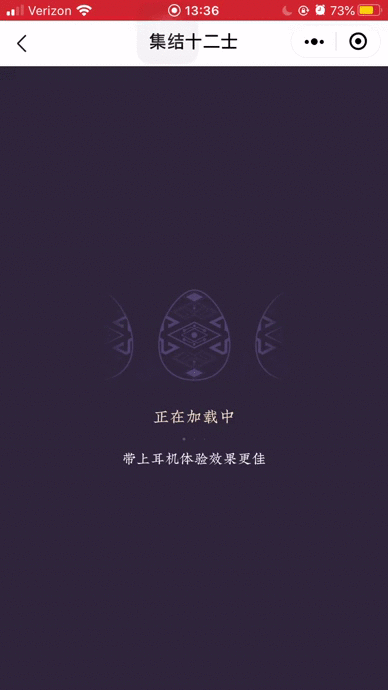The forced closure of Chinese institutions in late January accelerated a digital pivot that was already underway to better engage Millennials and Gen-Zers. Take, for example, the countless institutions that uploaded virtual tours, or Lhasa’s Potala Palace live streaming on e-commerce app Taobao, or Beijing’s contemporary art space, UCCA, reimagining its programming to deliver film, discussion, and workshopping on popular platforms.
A further example came from the home of the Terracotta Army, Emperor Qinshihuang’s Mausoleum Site Museum, which gave life to creations of the unified China’s first emperor with gamified WeChat Mini Program, essentially a non-downloadable app that runs inside WeChat. From the cartoon-inspired aesthetic, to the cutesy ‘mystery eggs’ users are charged with collecting, to the interactive manner in which bite-sized information was presented, it spoke of an initiative designed to engage younger audiences.
JT spoke to Wang Xuesong, Director of YAH Lab at Hylink, the creative digital agency behind the Mini Program, to understand the initiative as well as the broader push of Chinese cultural organizations to reach younger audiences.
What is the importance of young audiences to Chinese museums?
Attracting young audiences is not only a question for Chinese museums, but moreover a pressing question that concerns a range of industries from traditional companies and brands, to entertainment and technology companies. Young audiences represent change, trends, and fashion, and the future market, but focusing on young people has the power to attract other generations.
What is the starting point for Chinese museums looking to attract younger audiences?
Museums have to be very clear about their core values. Although they are repositories of art and history, they have to become creative in using their resources to inspire young people. What’s the point of attracting young people? To build connections with culture and history? To make money? To gain attention? These questions need to be answered. The first objective of museums is never to make money, but rather, to provide an understanding of cultural identity by creating content that inspires genuine connections with young people.
Practically speaking, how are these connections made?
One way is by referencing and playing with trending popular culture. Another is by using new technology and media to revive historical objects [and uploading them to social platforms] and tell new stories. Another is to create cultural products that have value in people’s everyday lives. Some Chinese museums have been very successful in this regard, some have even reached “Guo Chao” status [Chinese brands or products that connect with and harness patriotic sentiment].

Hylink helped create a gamified Mini Program for Emperor Qinshihuang’s Mausoleum Site Museum. Image: WeChat.
Hylink worked with Emperor Qinshihuang’s Mausoleum Museum to create a WeChat Mini Program, how does this fit within your framework for connecting with young audiences?
It was a fascinating case. The Terracotta Army is a deep root and source of Chinese culture dating back more than 2,000 years, but the question was; how can we rethink its cultural value and essence? In order to revisit and reimagine Qin dynasty culture, we restored the Terracotta Warriors using digital technology and brought them back to life to create an experience through which young people can look back at the past and discover things new and unexpected. It presents new possibilities for the integration of digital technology and museum culture.
What was the concept and focus of the Mini Program?
We aimed to tell the story of culture from a human perspective. It uses mystery eggs [taken from the idea of Easter Eggs], comets [connecting to Qin dynasty astrological expertise], and mythological creatures to inspire young audiences in a gamified Mini Program. The hope is that by looking through time users will find the many surprises left behind by traditional Chinese culture. The Mausoleum of Qin Shihuang is itself a huge and mysterious egg — its surprises belong to all mankind.
Many Chinese museums are using Mini Programs to engage young audiences, how far will initiatives such as these go in changing the image of museums?
I’m not inclined to use trends to understand the broader picture. In the long-term, the important thing is to change the approach in thinking. To say Chinese museums have an image problem is not quite correct, it’s more a question of better understanding public needs and gradually changing perceptions. This will require deep, creative thinking, but in time, we’ll find that the old can be cool.
This is the first in a two-part interview with Wang Xuesong.



